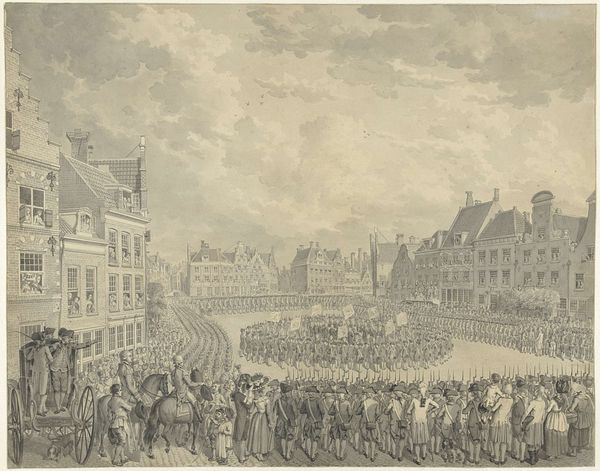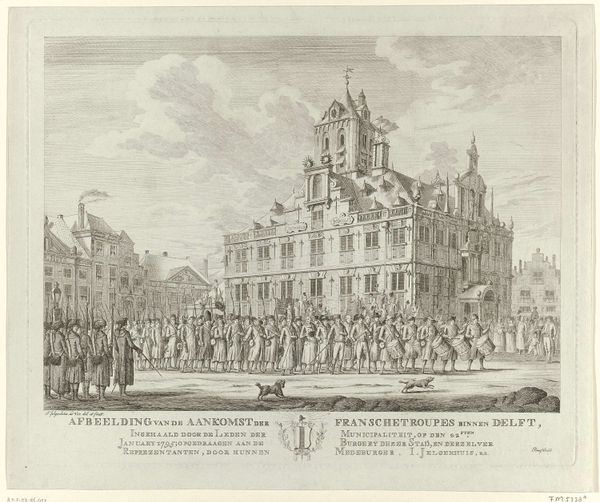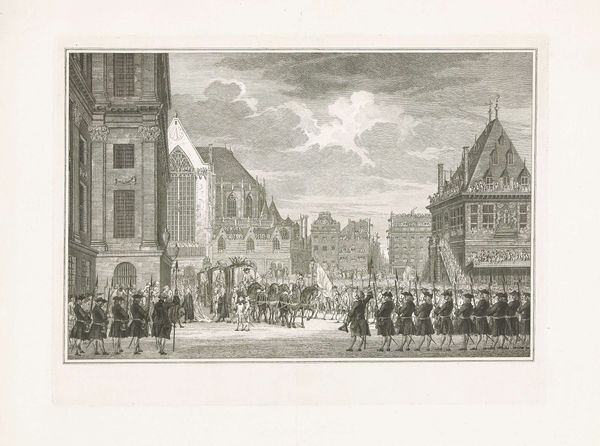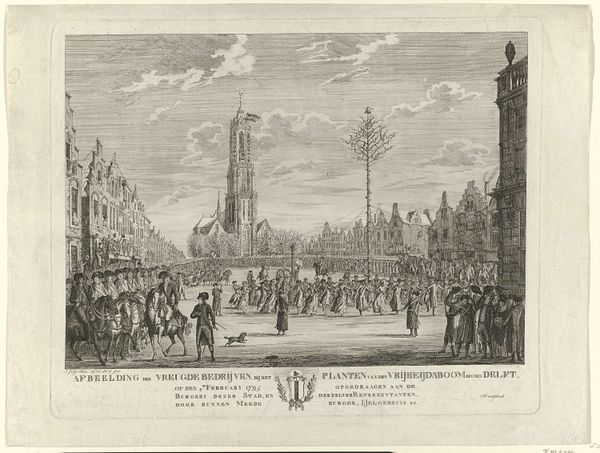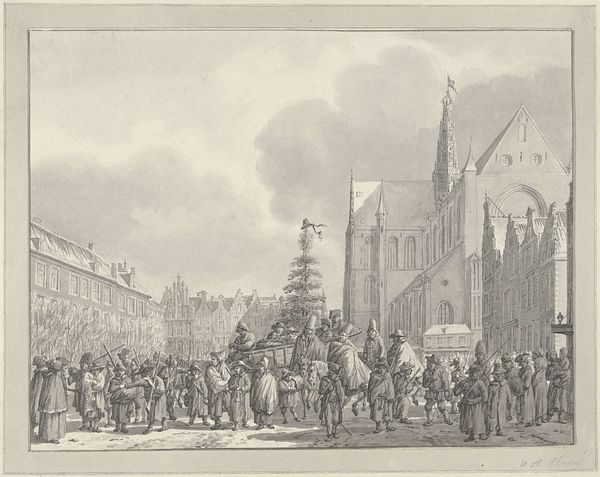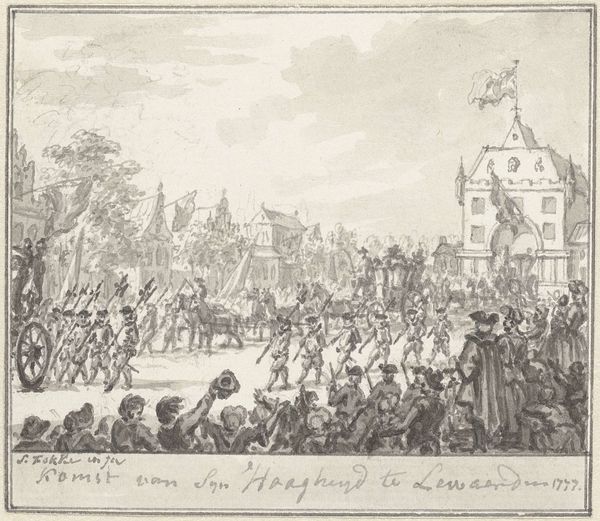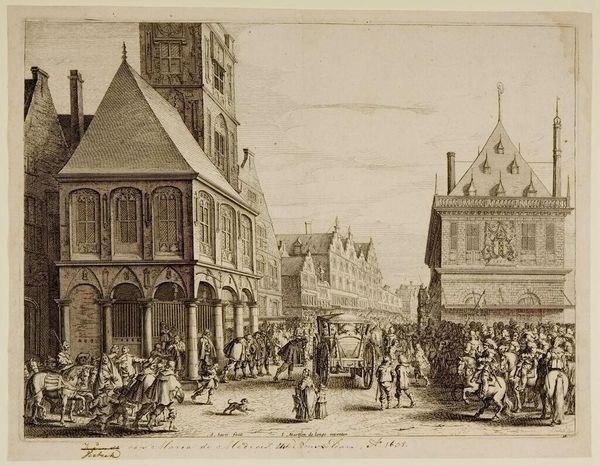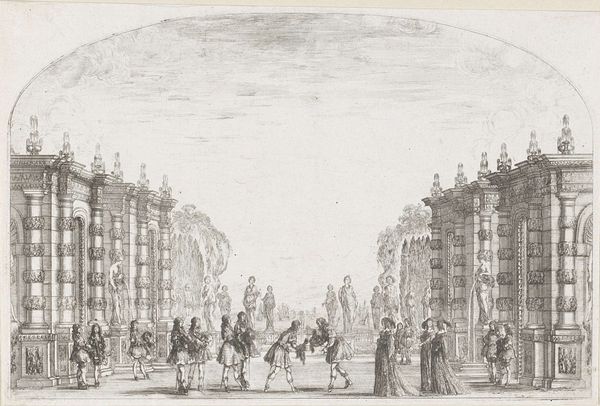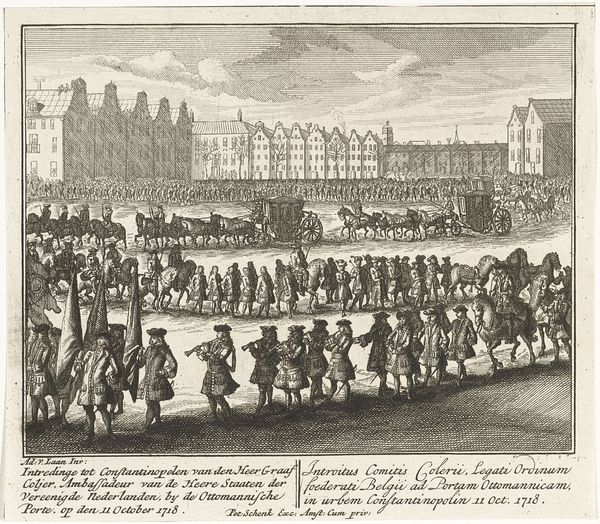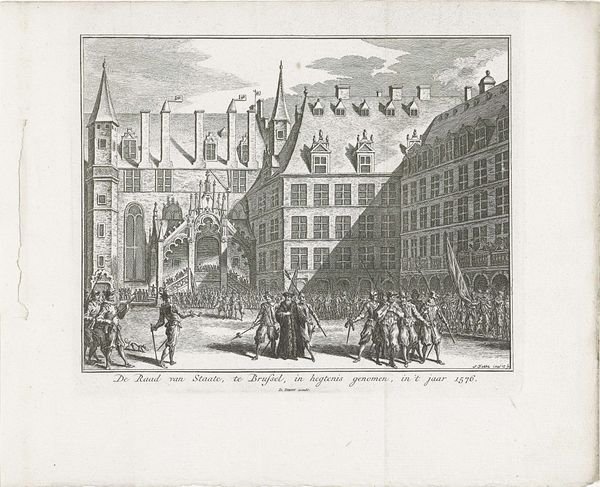
Aankomst van Prins Willem V en Frederica Sophia Wilhelmina van Pruisen bij het Stadhuis op de Dam te Amsterdam, 30 mei 1768 1769
0:00
0:00
reiniervinkeles
Rijksmuseum
print, engraving
#
neoclacissism
# print
#
old engraving style
#
cityscape
#
genre-painting
#
history-painting
#
engraving
Dimensions: height 256 mm, width 390 mm
Copyright: Rijks Museum: Open Domain
Curator: This is Reinier Vinkeles' 1769 engraving, depicting the arrival of Prince Willem V and Frederica Sophia Wilhelmina of Prussia at Amsterdam's City Hall on the Dam Square. Editor: It feels surprisingly modern for an 18th-century print. The artist's use of line creates such a vast, airy space. What strikes me is the feeling of contained excitement, of a public performance carefully managed and observed. Curator: Absolutely. Vinkeles captured a moment of high political theater. Willem V's power was increasingly challenged at this time, and these displays of public affection were crucial in maintaining the image of a strong Stadtholder. The engraving itself plays a role in solidifying that power by depicting popular support. Editor: It is very staged isn’t it? Look at how the crowd is pushed to the side almost out of the frame on both edges and packed on top of the buildings; the symmetry, the controlled space for the procession, the lined-up honor guard. Curator: It speaks volumes about the controlled environment. Vinkeles, working within the artistic conventions of neoclassicism, was meticulous in representing not only the event, but the social order it signified. It is very calculated imagery when it comes to conveying status, isn’t it? Even the architectural backdrop contributes. Editor: And look at that impressive city hall—now the Royal Palace. I would say it's about celebrating the enduring structures of power, not just in the ruling family, but within the city itself. A pre-revolutionary stability depicted at the surface that, with some consideration, also hides what is percolating underneath. Curator: Precisely! The architecture here takes on an active role as a character in a larger political story. The city itself almost approves the Prince’s rule. This image served as propaganda, whether intentionally or not, emphasizing stability during a volatile time. Editor: Seeing the cityscape as a key player makes it more interesting to view with a contemporary lens. It serves as a potent reminder that even seemingly straightforward historical images can carry multiple layers of meaning and that even architectural features in imagery carry strong messages and contexts. Curator: Yes, it really highlights how art shapes and reflects power dynamics in 18th century Amsterdam.
Comments
No comments
Be the first to comment and join the conversation on the ultimate creative platform.
